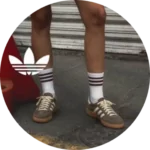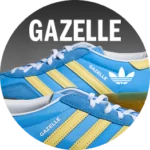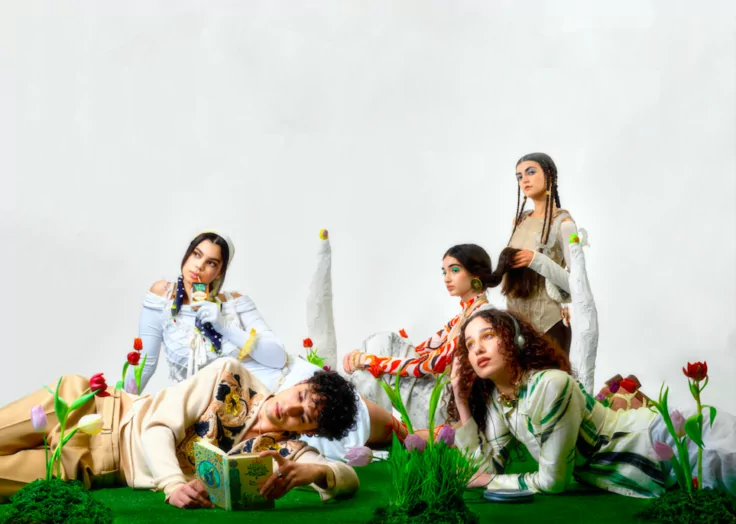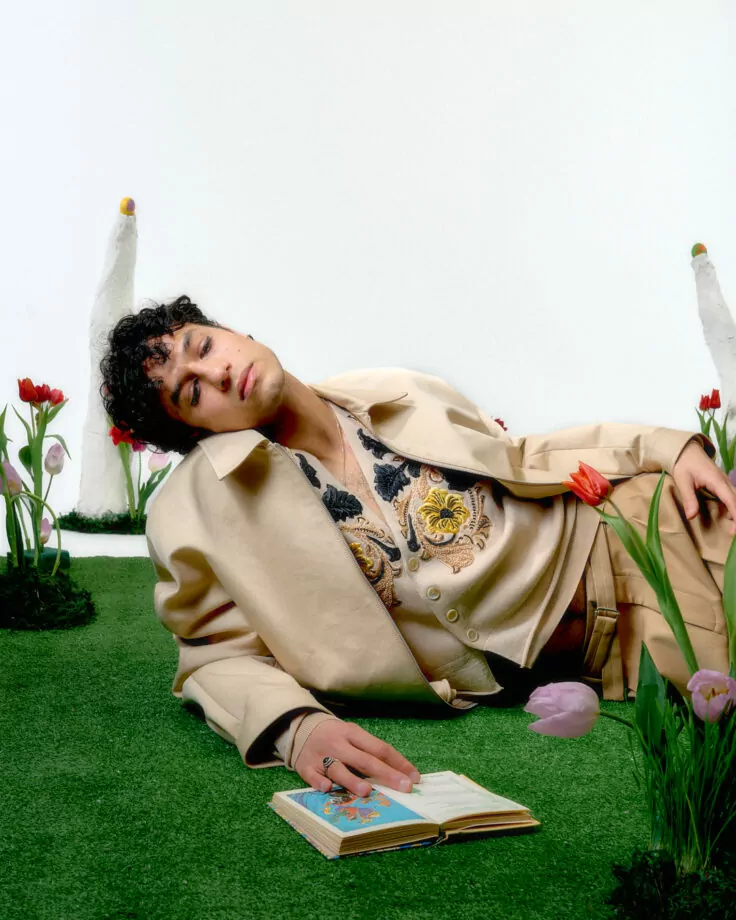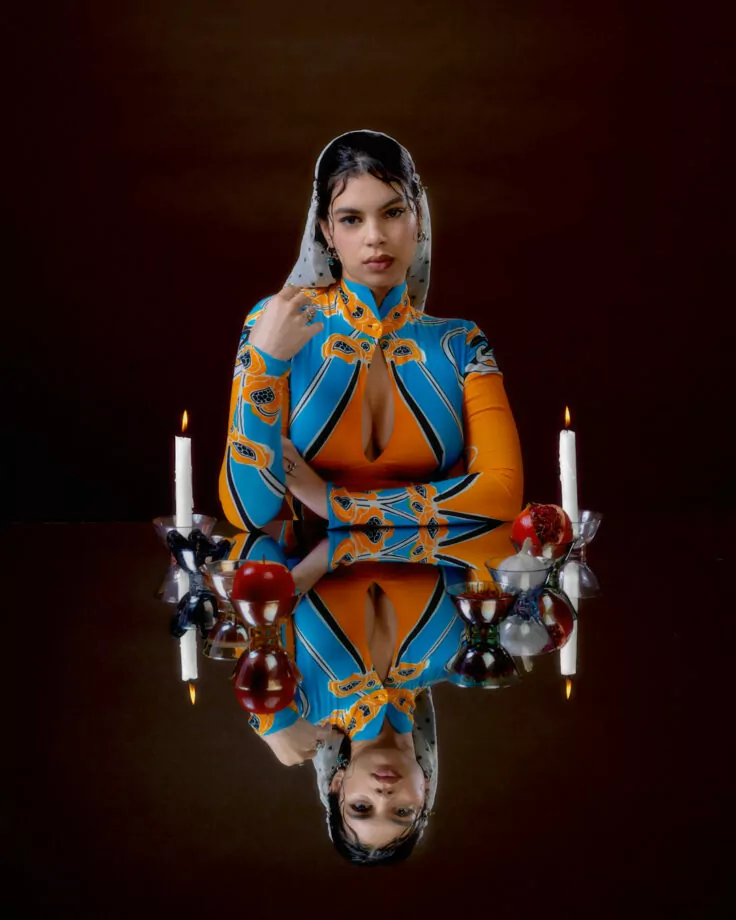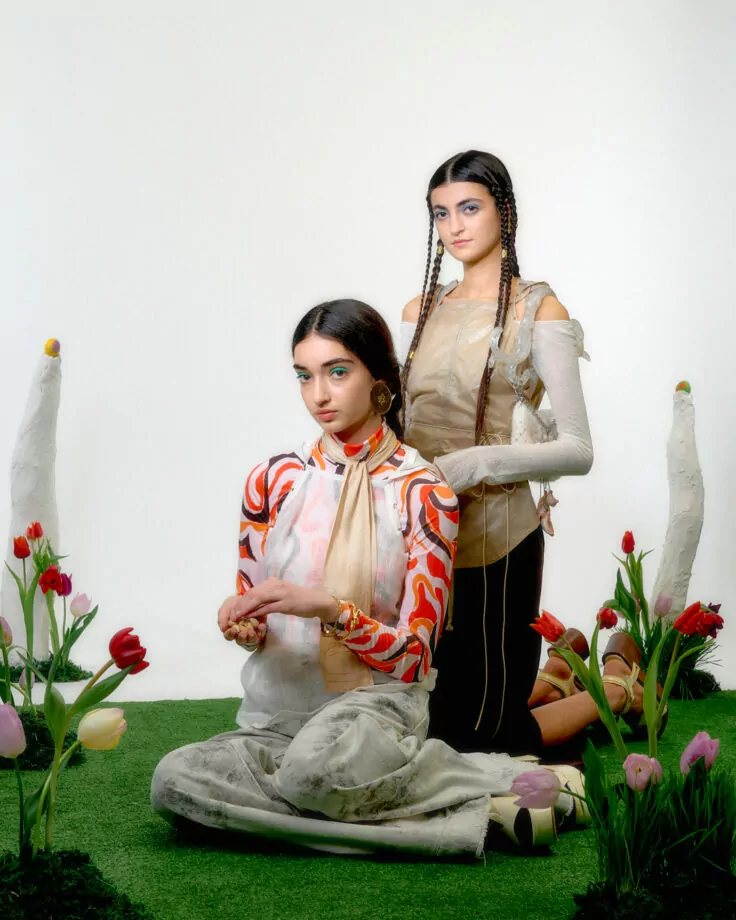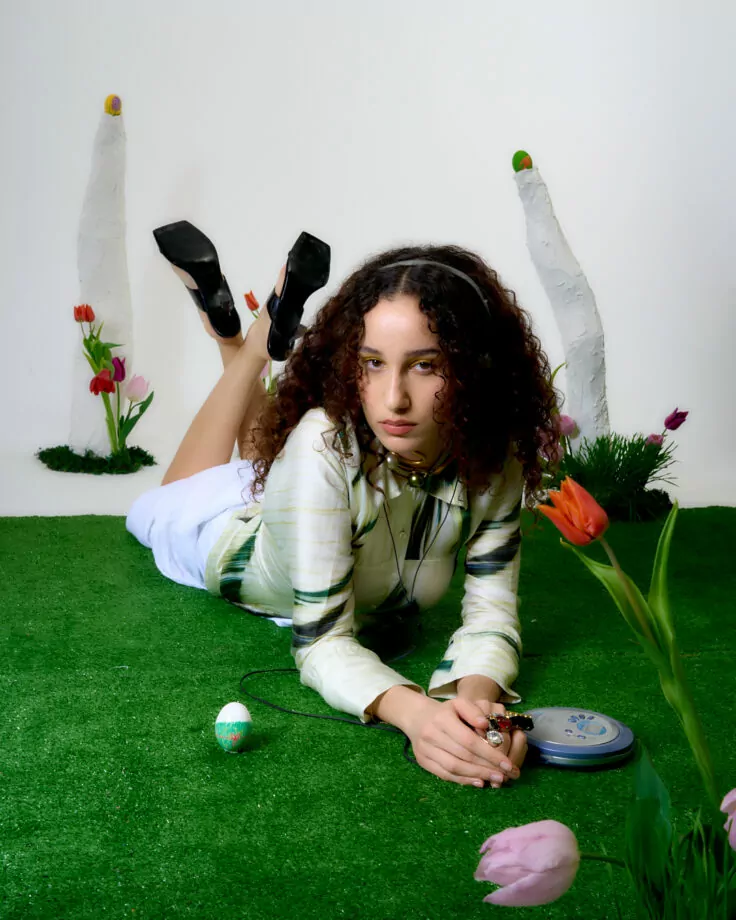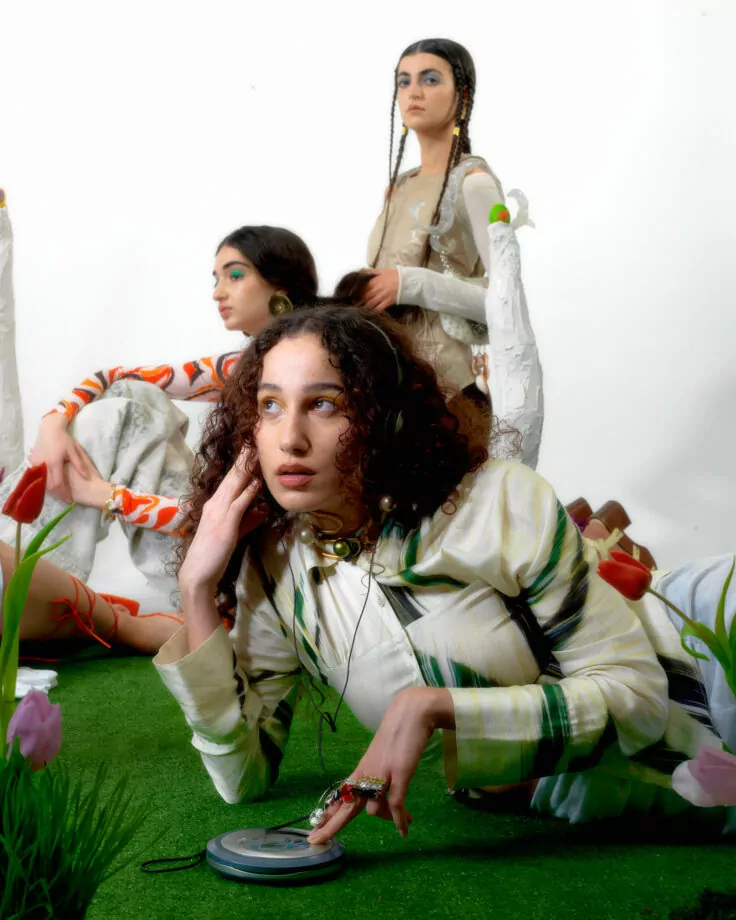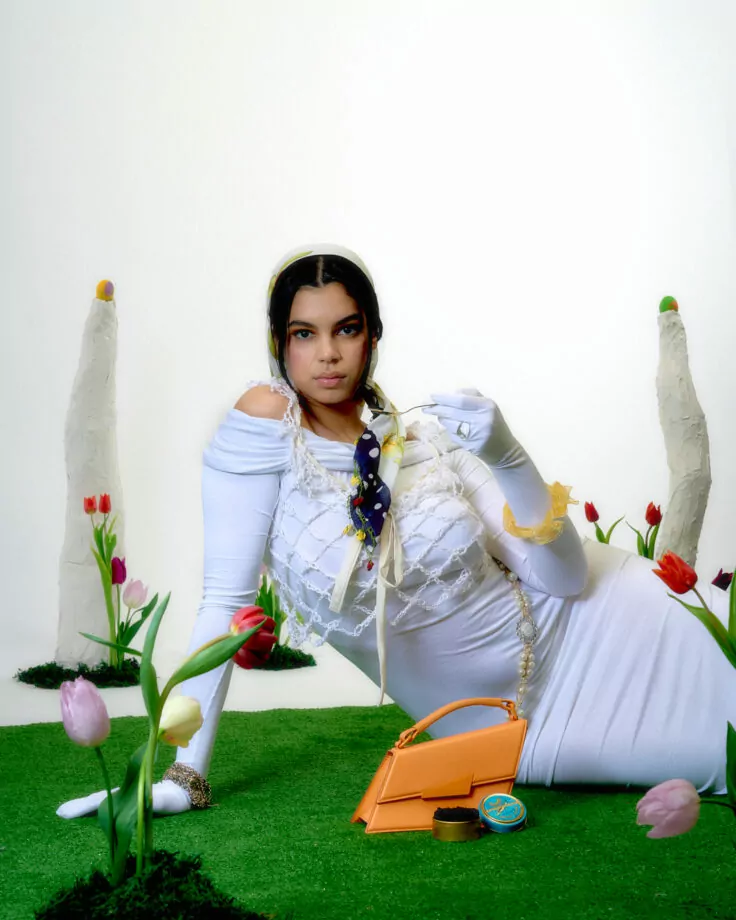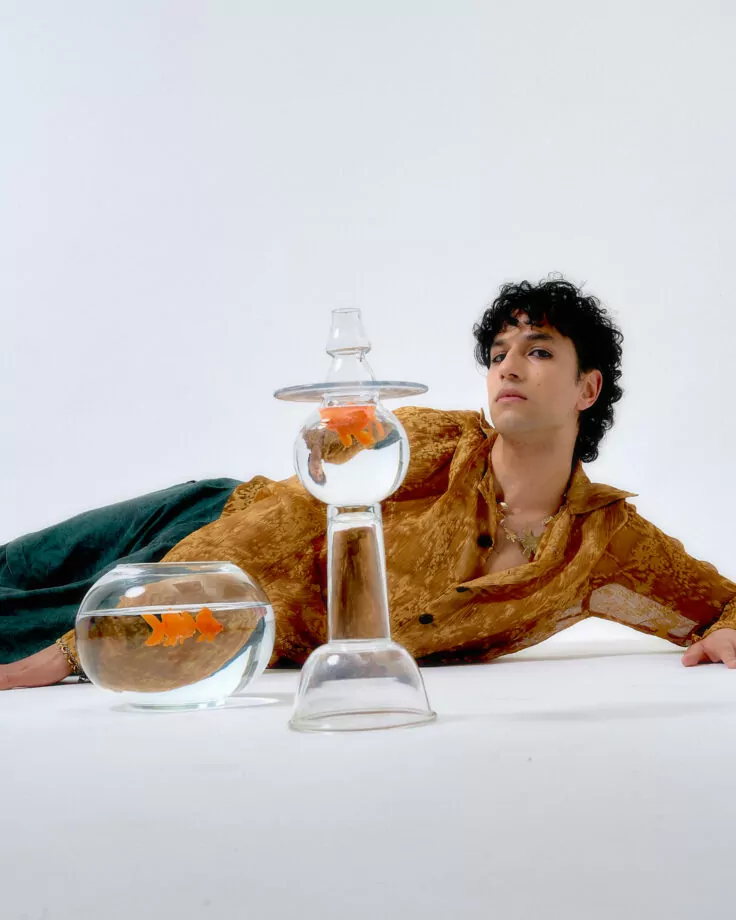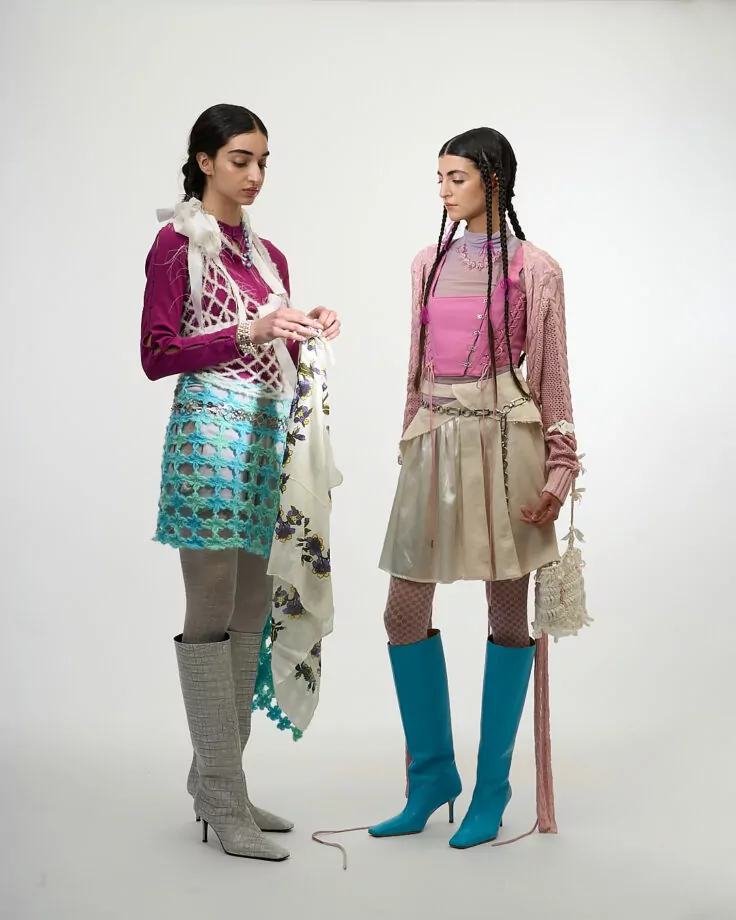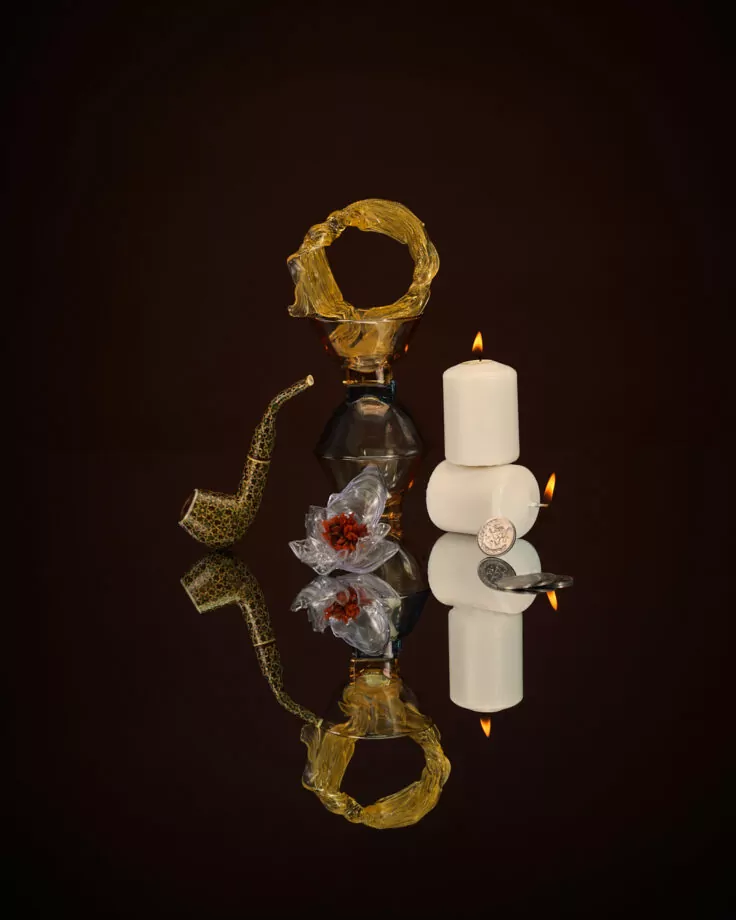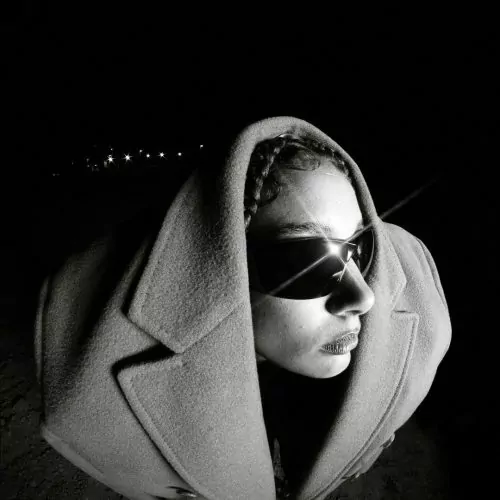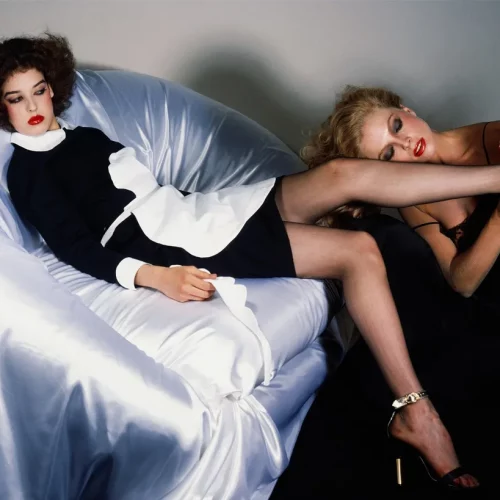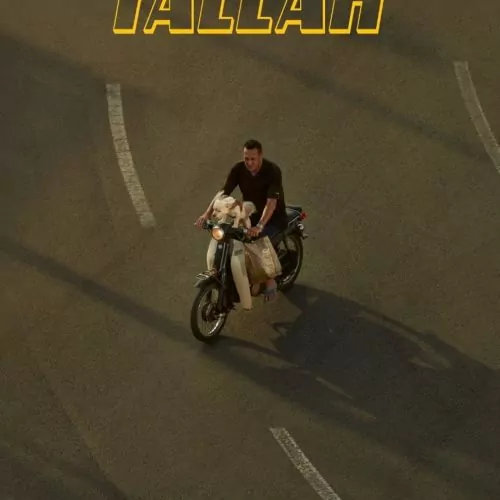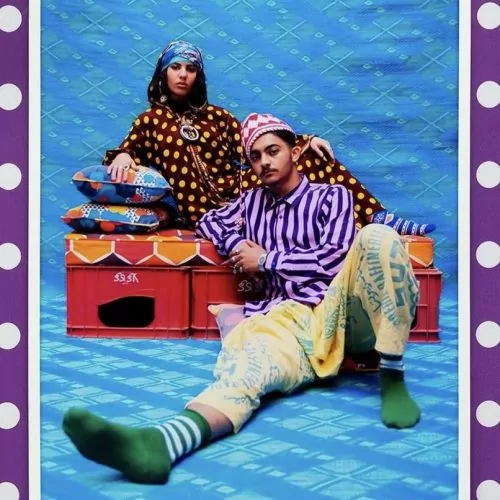“Iranian culture is very tasteful and incredibly rich, and I simply wanted to stray away from the usual ideas we have of the country through a new form of social engagement, especially in fashion, which is often used as a means to improve your brand image more than anything else,” says Julien Rahmani, who goes by the moniker Raman3000 online, about his latest editorial shoot, unveiled for the first time with MILLE.
For the new visual project, the 28-year-old tri-national photographer and creative director, who has Algerian, Iranian, and French roots, decided to take it upon himself to cast a different, and more positive light than the one we are used to, on one of his motherlands, namely Iran.
From the recent wave of street demonstrations to the Islamic Revolution of 1979, and everything in between, the day the Persian State met broadcast television, an overarching sense of negativity has stripped the Western Asian country from all of its multifaceted beauty, rich cultural heritage, and awe-inducing landscapes. Today, it’s common to see the country only ever associated with terms that mirror turmoil, conflict, and oppression.
However, there is a new generation of creatives, which obviously includes Rahmani, who are on a staunch mission to challenge the current narrative, proudly focusing on what their native land has to offer instead of succumbing to the prevailing portrayals of despair.
What initially felt like a random idea eventually materialized into a fully-fledged ode to Iran, harped through a couple weeks of calling and texting that culminated into a minimalist series of photographs that puncture the cliches and negative stereotypes and give an edge to a country that has so much more to offer than what meets the eye.
Below, we sat down with Rahmani and the creative team involved with the visual series — Lola Carierre, set designer; the stylists, Nina Meziani, Lola Maux, Tara Fournerie, hairstylists Yu Wu, and Dylan Aouizerate; and makeup artists Camille Lam and Marie Vallée— to shoot the breeze, discover why projects like these are so necessary, as well as what inspired them to embark on this creative endeavor.
How did the idea initially come into fruition? What sparked the idea to begin with?
Julien Rahmani: Through my work in fashion and photography, I always try to be as precise and authentic as I can when it comes to representing cultures, with a strong accompanying storytelling that’s in symbiosis with the rest of the tale I’m trying to recount.
For this one in particular, we focused on Iran as the new year starts at the beginning of spring, when nature comes back to life. It’s this omnipresent sense of poetry in Iranian culture that made me want to depict it visually, with the many subtleties it comes with as well.
Why is the idea of Nowruz so central? Could you tell us more about that?
Julien Rahmani: Nowruz means ‘new day’ in Farsi. It is the Iranian New Year and the celebration of the beginning of spring. There are several traditions that tend to take place during that same period of the year, but we wanted to focus on “Haft Sìn” which is the arrangement of symbolic items that Iranian families display at home.
It appears that your shoot is full of symbolism. What elements have you incorporated and why? What message do you want to convey?
Julien Rahmani: I wanted to plunge the team into Iranian vibes throughout the entire shoot. From the music we played and the food we cooked during our lunch break to the gifts the team received, symbolism was present at every level.
If you look carefully at the pictures, you can find some iconic Haft Sín items such as the wheatgrass that is the symbol of rebirth and growth, samanu (power and strength), sumac (sunrise), colored eggs (fertility), garlic (health and medicine), hyacinth (spring’s arrival), coins (matter, material world, wealth and prosperity), a mirror (self-reflection), acandle (enlightenment), goldfish (progress), or a book (wisdom).
Lola Carriere: The idea was to recreate this tradition filled with delicacy, which normally comes alive around a table but here in different spaces. I painted elements of Haft Sìn on the eggs and exposed them in large cups that spring from the ground in a pictorial field. Other items merge in a mirror. Old coins from the time of the Shah and Khomeini or poems by Omar Khayyam are also present. We also featured specific Iranian products like the caviar in the photo depicting Tehran’s golden youth.
From a stylistic perspective, why did the team go for a retro aesthetic? How was that achieved and managed?
Nina Meziani, Lola Maux, Tara Fournerie: We had the idea of keeping the vintage side very ‘70s (pre-revolution times in Iran when the dress code was way less conservative as it is now) by adding a touch of modernity. We wanted to make it retro futuristic with strong pieces, overlays, and bright colors. For example, we mixed the scarves of our model’s grandmother, Serav, with plastic jewelry from Tetier Paris with a wool bag from r.l.e and Acne boots.
Camille Lam, Marie Vallée: We worked on the makeup in a soft and refined way in order to keep the natural expression of our models. The pop of colors used on the eyes, as well as the intensity of the eyebrows reminded us of some of the strong faces found in Iranian culture.
Yu Wu, Dylan Aouizerate: For the hair, we were inspired by several references such as the legend Googoosh or actress Türkân Şoray, who had many veiled roles while remaining glamorous. The slightly technical braids are inspired by the Kurdish fighters from the PKK.
From behind to in front of the camera, both the team and models seem to have some sort of relationship with the region. Was it important for the shoot to carry this “for us by us” mentality? Why?
Julien Rahmani: It is always essential to involve concerned people to have more authentic results. Also it is easier to speak about something we know and experienced before.
I wanted to have a casting composed solely of models with Iranian roots, but the deadline did not allow this. Especially since this is a fully independently funded project. This is something I want to work on next time.
What was the creative process like throughout the building of this editorial? Were there any hurdles at all?
Julien Rahmani: I really had a great time working on this project and I learned a lot of new things by documenting myself on certain subjects. Like all independent projects, the main obstacle remains money. To counter this, I spent a lot of time creating a very detailed mood board thanks to which I was able to convince talented people to work with us on this project. The result is the result of collective work and creativity.
Now that this has been explored, what can we expect from you next?
Julien Rahmani: There is so much more to unpack when it comes to Iranian culture that I will definitely not stop here. I want to keep my narrative strong and continue to highlight other cultures I’m interested in. I’m currently working on other projects in the Middle East and in Europe. I would like to reach people who are not necessarily sensitive to my subjects or my approach.
Full look Lanvin, vintage ring and necklace.
Dress: Patou. Ring and Earrings: Justine Clenquet. Vintage scarf.
Left: Top: Marni x Uniqlo. Sleeveless top: Céline Shen. Scarf: Christian Dior. Sandals: Nomasei.
Right: Full look: Simone Wild. Handbag: Olivia Rubens. Earrings: Acne. Sandals: Nomasei.
Shirt: Provencia. Skirt: Le Fil Paris. Necklace and rings: Lacuna. Sandals: Nomasei.
Shirt: Provencia. Skirt: Le Fil Paris. Necklace and rings: Lacuna. Sandals: Nomasei.
Dress: Maldito. Mesh top: De Pino. Ring: Tetier Bijoux. Vintage ring, belt and scarf. Handbag: Acne.
Shirt: Peng Tai. Pants: G.YD Studio. Necklace and bracelet: PR Paris.
Left: Top and mesh: De Pino. Vintage scarf, jewelry and belt. Tights: Christian Dior.
Right: Top: Kriba. Corset: Kriba. Veste: Marrknull. Skirt: Peng Tai. Tights: Christian Dior. Bag: R.L.E. Boots: Acne.

Bracelet and ring: Tétier Bijoux.
Credits:
Creative director and Photographer: Julien Rahmani / @raman.3000
Production: Juliette Beulaguet / @juliette_blgt
Digital operator: Aster Verrier / @asterverrier
Light assistant: Alexandre Mettoudi
Light assistant: Thomas Lizzi / @thomas.lizzi
Styliste: Nina Meziani / @nina.meziani
Assistant styliste: Lola Maux / @lolamaux & Tara Fournerie / @taerafuni
Set Design: Lola Carriere / @lola.carriere
Set design assistant: Geoffrey Chevtchenko / @geoffreychevt
Make up: Marie Vallée / @Mariemastuvu & Camille Lam / @kmi_makeup
Hair stylist: Yu Wu/ @wuyumakeup & Dylan Aouizerate / @lil_kika_
Models:
Émeline Hoareau / @emlinhr
Gül Obuk / @bonjourgully
Serav Yalcin/ @srrrvvv
Lucie Kiremitdjian / @lucie.kir
Yahia Dabbous / @yadabbous
Studio: @scaldconnexion
Special thanks to @diggakhedija, @donzerinho, Alexandre Mettoudi, @tetetetechos, @raphaellebcn
